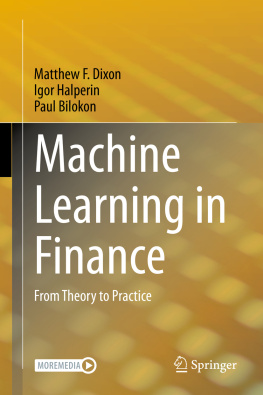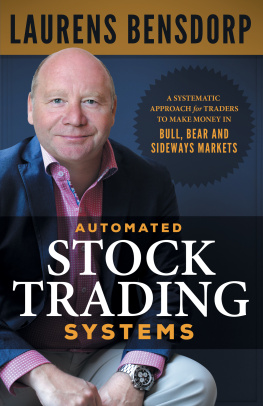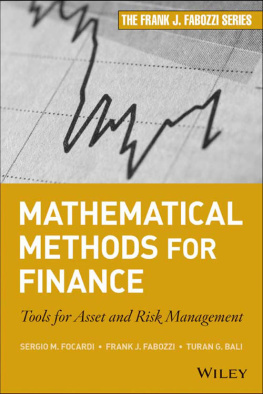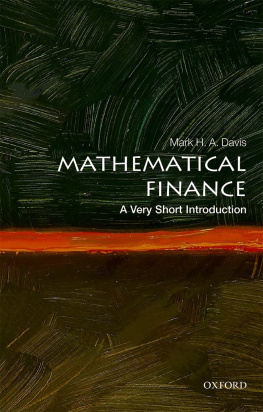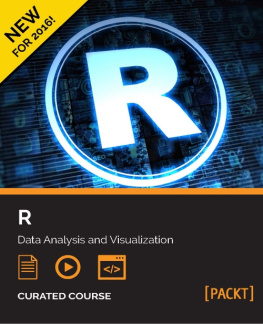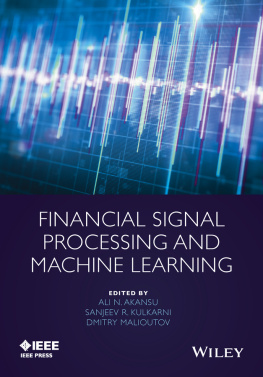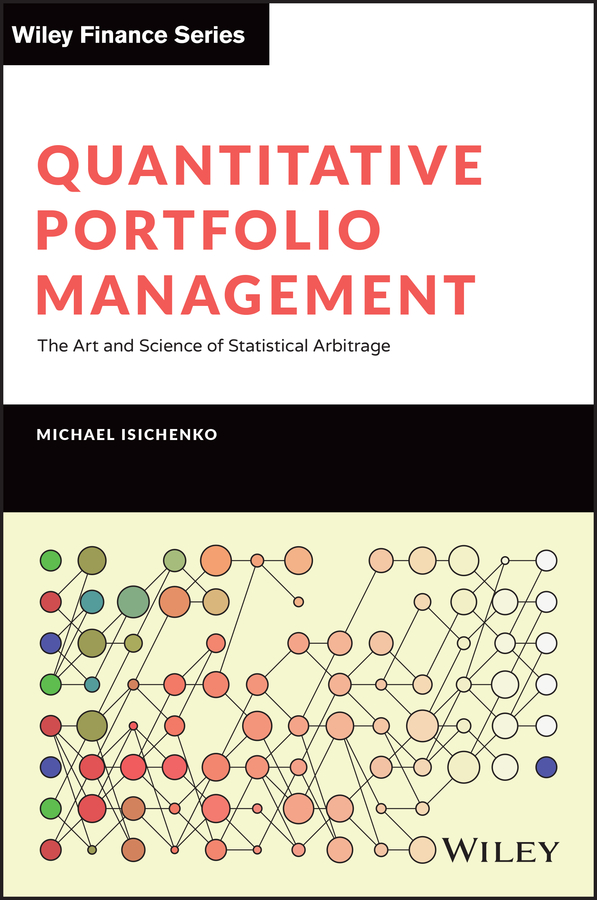
Table of Contents
Guide
Pages
Quantitative Portfolio Management
The art and science of statistical arbitrage
Michael Isichenko

Copyright 2021 by Michael Isichenko. All rights reserved.
Published by John Wiley & Sons, Inc., Hoboken, New Jersey.
Published simultaneously in Canada.
No part of this publication may be reproduced, stored in a retrieval system, or transmitted in any form or by any means, electronic, mechanical, photocopying, recording, scanning, or otherwise, except as permitted under Section 107 or 108 of the 1976 United States Copyright Act, without either the prior written permission of the Publisher, or authorization through payment of the appropriate per-copy fee to the Copyright Clearance Center, Inc., 222 Rosewood Drive, Danvers, MA 01923, (978) 750-8400, fax (978) 750-4470, or on the web at www.copyright.com. Requests to the Publisher for permission should be addressed to the Permissions Department, John Wiley & Sons, Inc., 111 River Street, Hoboken, NJ 07030, (201) 748-6011, fax (201) 748-6008, or online at http://www.wiley.com/go/permission.
Limit of Liability/Disclaimer of Warranty: While the publisher and author have used their best efforts in preparing this book, they make no representations or warranties with respect to the accuracy or completeness of the contents of this book and specifically disclaim any implied warranties of merchantability or fitness for a particular purpose. No warranty may be created or extended by sales representatives or written sales materials. The advice and strategies contained herein may not be suitable for your situation. You should consult with a professional where appropriate. Neither the publisher nor author shall be liable for any loss of profit or any other commercial damages, including but not limited to special, incidental, consequential, or other damages.
For general information on our other products and services or for technical support, please contact our Customer Care Department within the United States at (800) 762-2974, outside the United States at (317) 572-3993 or fax (317) 572-4002.
Wiley also publishes its books in a variety of electronic formats. Some content that appears in print may not be available in electronic formats. For more information about Wiley products, visit our web site at www.wiley.com.
Library of Congress Cataloging-in-Publication Data
Names: Isichenko, Michael, author.
Title: Quantitative portfolio management : the art and science of statistical arbitrage / Michael Isichenko.
Description: Hoboken, New Jersey : John Wiley & Sons, Inc., [2021] | Includes bibliographical references and index.
Identifiers: LCCN 2021013923 (print) | LCCN 2021013924 (ebook) | ISBN 9781119821328 (cloth) | ISBN 9781119821229 (adobe pdf) | ISBN 9781119821212 (epub)
Subjects: LCSH: Portfolio managementMathematical models. | Arbitrage.
Classification: LCC HG4529.5 .I83 2021 (print) | LCC HG4529.5 (ebook) | DDC 332.6dc23
LC record available at https://lccn.loc.gov/2021013923
LC ebook record available at https://lccn.loc.gov/2021013924
Cover Design: Wiley
Cover Image: Michael Isichenko
List of Figures
Code Listings
Preface
This book describes the process used by quantitative traders, or quants, a community the author has belonged to for a number of years. Quants are not usually trained as quants, but often come from one of the hard sciences such as mathematics, statistics, physics, electrical engineering, economics, or computer science. The author, a physicist by training, feels guilty for (ab)using the word describing a fundamental concept of quantum physics in the context of quantitative trading, but this slang is too rooted in the industry to be avoided. Having quantitative finance professionals in mind, the intended audience is presumed interdisciplinary, fluent in mathematical notation, not foreign to algorithmic thinking, familiar with basic financial concepts such as market-neutral strategies, and not needing a definition of pnl. This book could be also interesting to those readers who are thinking of joining the quant workforce and wondering if it is worth it.
The quant trading business, especially its alpha part, tends to be fairly secretive, but the traffic of portfolio managers and analysts between quant shops has created a body of common knowledge, some of which has been published in the literature. The book is an attempt to cover parts of this knowledge, as well as to add a few ideas developed by the author in his own free time. I appreciate the concern of some of the more advanced colleagues of mine about letting the tricks of the trade out in the wild. Those tricks, such as machine learning and optimization algorithms, are mostly in the public domain already but are spread over multiple fields. In addition to academic research, Wall Street can learn a lot from Silicon Valley, whose inhabitants have generated a tremendous and less secretive body of knowledge. Using an analogy with cryptography, and learn better coding.
The choice of topics for this book is aligned with the author's personal interests in the field, although an honest attempt is made to cover, in depth or in passing, all relevant parts of statistical arbitrage, a quantitative approach to equity trading. Whether or not a particular formula or approach is expected to help make money (or avoid losses) is not disclosed or opined upon, in part because any application success is data- and implementation-dependent, and in part to keep the reader in suspense. The book is also an attempt to strike a balance between what the author could say and is comfortable saying. In the field of quantitative trading, the more interesting stuff doesn't usually get published. In this book, the reader will hopefully find a few things that might be interesting or at least entertaining.
Any resemblance of described quantitative practices to past or existing firms is coincidental and may not be statistically significant. As Kurt Vonnegut admitted in Slaughterhouse-Five, All this happened, more or less. This book is for quants and, occasionally, about quants.
A lot of the quantitative portfolio management process involves data and code. The exposition style adopted in this book does not include too many charts, tables, or code snippets, although there are some. Instead, the focus is on ideas, motivation for various approaches, and mathematical description seeking a terse and elegant exposition whenever possible. Mathematical formulas tend to be more compact and expressive than code written in any programming language. In addition, and quoting the enormous usefulness of mathematics in the natural sciences is something bordering on the mysterious and ... there is no rational explanation for it.
_____________
- Accordingly, and for the reader's convenience, the electronic version of this book has multiple hyperlinks to Wikipedia and other URLs.
This book is an unlikely result of some 20 years of trial-and-error discovery. It is also a work in progress. The author will appreciate indication of any omission or error, as well as any feedback from the reader, whose comments are most welcome at .
M.I.
New York-Montauk, June 2020May 2021.
_____________
- , Communications in Pure and Applied Mathematics, 13(I), February 1960.
Next page

